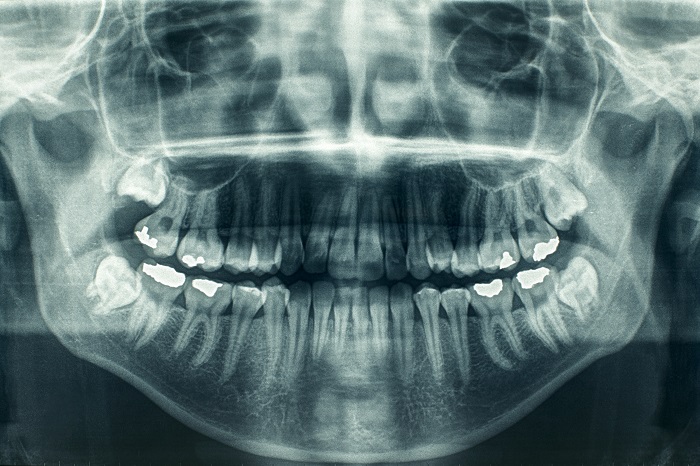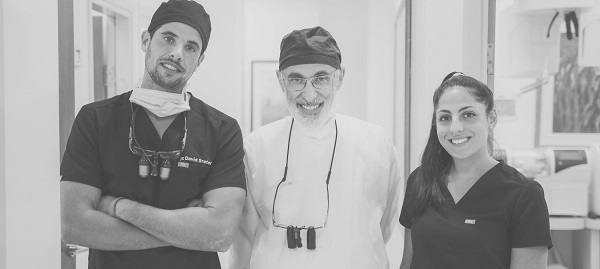
Treatment of Dental Diseases
- Canker Sores
- Canker Sores and Cold Sores
- Detecting oral cancer early
- Diabetes and Oral Health
- Oral care for Cancer Patients
- Preventing periodontal disease
- What is Gum Disease?
Share This Page
You can take steps to prevent oral cancer. Learn the risk factors and adopt a lifestyle that protects your oral health. Visit your dentist regularly. He or she can look for changes that could indicate disease.
WHAT WILL MY DENTIST LOOK FOR?
Checking for signs of oral cancer is part of a regular dental checkup. Your dentist can examine your oral tissues easily by looking at your lips and inside your mouth. He or she will check your gingivae (gums) carefully, the inside of your cheeks and your tongue (the sides and underneath). Also, the dentist will look at the roof and floor of your mouth.
WHAT IS MY DENTIST LOOKING FOR?
Other signs of oral cancer include numbness, pain or tenderness, or a change in the way your teeth fit together when you bite down. Tell your dentist about any problems you have when chewing, swallowing, speaking or moving your tongue or jaw.
WHAT ARE THE RISK FACTORS?
Many of the risk factors1 for oral cancer stem from behaviors that can be avoided. Oral cancer most often develops in people who smoke (cigarettes, pipes or cigars) and drink heavily. The Centers for Disease Control and Prevention2 considers heavy drinking to be an average of two drinks a day or more for men and an average of more than one drink a day for women. Smokeless tobacco products also increase one’s risk of developing oral lesions. Repeated and prolonged exposure to the sun can cause lip cancer. Infection with some forms of the human papillomavirus places people at risk as well. A diet low in fruits and vegetables also seems to increase the chance of developing the disease. If you have had oral cancer, you may be more likely to develop it again.
HOW CAN MY DENTIST HELP?
Your dentist is interested not only in your teeth. He or she checks the general appearance and health of your oral tissues as part of a regular examination and looks for any changes or abnormalities in your mouth, face and neck. Your dentist will not be able to diagnose cancer during an examination. Oral cancer can be diagnosed only with a biopsy, when a sample of tissue in the area is removed and examined under a microscope. However, your dentist can identify suspicious-looking areas or growths that may need further evaluation.
The American Dental Association has developed recommendations to help your dentist in checking for signs of oral cancer. If anything unusual appears during your examination, he or she might reexamine you in one or two weeks3; it is possible that the questionable spot might heal during that time. Or your dentist may refer you to another dentist or a physician for a second opinion.3 You and your dentist can talk about your options and what might be causing the abnormality. Together, you can determine the best next step for you.
Footnotes
1. National Cancer Institute. What you need to know about oral cancer: risk factors. “www.cancer.gov/cancertopics/wyntk/oral/page4”. Accessed March 23, 2010.
2. Centers for Disease Control and Prevention. Alcohol: frequently asked questions. “www.cdc.gov/alcohol/faqs.htm#10”. Accessed March 23, 2010.
3. Aravamudhan K, Rethman MP, Carpenter W, et al; for the American Dental Association Council on Scientific Affairs Expert Panel on Screening for Oral Squamous Cell Carcinomas. Evidence-based clinical recommendations regarding screening for oral squamous cell carcinomas. JADA 2010; 141(5):509-520.
Prepared by the American Dental Association ADA Division of Science. Copyright © 2010 American Dental Association. Unlike other portions of JADA, the print version of this page may be clipped and photocopied as a handout for patients without reprint permission from the ADA Publishing Division. Any other use, copying or distribution of this material, whether in printed or electronic form and including the copying and posting of this material on a Web site, is strictly prohibited without prior written consent of the ADA Publishing Division.
“For the Dental Patient” provides general information on dental treatments to dental patients. It is designed to prompt discussion between dentist and patient about treatment options and does not substitute for the dentist’s professional assessment based on the individual patient’s needs and desires.
FOR THE DENTAL PAT I E N T . . . Figure. A suspicious lesion beneath the tongue. ➛ Copyright © 2010 American Dental Association. All rights reserved. Reprinted by permission.
WHAT WILL MY DENTIST LOOK FOR?
Checking for signs of oral cancer is part of a regular dental checkup. Your dentist can examine your oral tissues easily by looking at your lips and inside your mouth. He or she will check your gingivae (gums) carefully, the inside of your cheeks and your tongue (the sides and underneath). Also, the dentist will look at the roof and floor of your mouth.
WHAT IS MY DENTIST LOOKING FOR?
- red or white patch;
- sore that bleeds easily or does not heal;
- thick or hard spot or a lump;
- roughened or crusted area.
Other signs of oral cancer include numbness, pain or tenderness, or a change in the way your teeth fit together when you bite down. Tell your dentist about any problems you have when chewing, swallowing, speaking or moving your tongue or jaw.
WHAT ARE THE RISK FACTORS?
Many of the risk factors1 for oral cancer stem from behaviors that can be avoided. Oral cancer most often develops in people who smoke (cigarettes, pipes or cigars) and drink heavily. The Centers for Disease Control and Prevention2 considers heavy drinking to be an average of two drinks a day or more for men and an average of more than one drink a day for women. Smokeless tobacco products also increase one’s risk of developing oral lesions. Repeated and prolonged exposure to the sun can cause lip cancer. Infection with some forms of the human papillomavirus places people at risk as well. A diet low in fruits and vegetables also seems to increase the chance of developing the disease. If you have had oral cancer, you may be more likely to develop it again.
HOW CAN MY DENTIST HELP?
Your dentist is interested not only in your teeth. He or she checks the general appearance and health of your oral tissues as part of a regular examination and looks for any changes or abnormalities in your mouth, face and neck. Your dentist will not be able to diagnose cancer during an examination. Oral cancer can be diagnosed only with a biopsy, when a sample of tissue in the area is removed and examined under a microscope. However, your dentist can identify suspicious-looking areas or growths that may need further evaluation.
The American Dental Association has developed recommendations to help your dentist in checking for signs of oral cancer. If anything unusual appears during your examination, he or she might reexamine you in one or two weeks3; it is possible that the questionable spot might heal during that time. Or your dentist may refer you to another dentist or a physician for a second opinion.3 You and your dentist can talk about your options and what might be causing the abnormality. Together, you can determine the best next step for you.
Footnotes
1. National Cancer Institute. What you need to know about oral cancer: risk factors. “www.cancer.gov/cancertopics/wyntk/oral/page4”. Accessed March 23, 2010.
2. Centers for Disease Control and Prevention. Alcohol: frequently asked questions. “www.cdc.gov/alcohol/faqs.htm#10”. Accessed March 23, 2010.
3. Aravamudhan K, Rethman MP, Carpenter W, et al; for the American Dental Association Council on Scientific Affairs Expert Panel on Screening for Oral Squamous Cell Carcinomas. Evidence-based clinical recommendations regarding screening for oral squamous cell carcinomas. JADA 2010; 141(5):509-520.
Prepared by the American Dental Association ADA Division of Science. Copyright © 2010 American Dental Association. Unlike other portions of JADA, the print version of this page may be clipped and photocopied as a handout for patients without reprint permission from the ADA Publishing Division. Any other use, copying or distribution of this material, whether in printed or electronic form and including the copying and posting of this material on a Web site, is strictly prohibited without prior written consent of the ADA Publishing Division.
“For the Dental Patient” provides general information on dental treatments to dental patients. It is designed to prompt discussion between dentist and patient about treatment options and does not substitute for the dentist’s professional assessment based on the individual patient’s needs and desires.
FOR THE DENTAL PAT I E N T . . . Figure. A suspicious lesion beneath the tongue. ➛ Copyright © 2010 American Dental Association. All rights reserved. Reprinted by permission.


